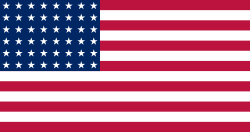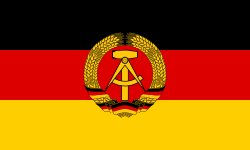Julija Gusjtjina
| Den här artikeln innehåller inaktuella uppgifter och behöver uppdateras. (2022-08) Motivering: Har förlorat majoriteten av sina medaljer efteråt pga dopingavslöjanden. Hjälp gärna Wikipedia att åtgärda problemet genom att redigera artikeln eller diskutera saken på diskussionssidan. |
| Julia Gusjtjina | |
 | |
| Född | 4 mars 1983[1] (41 år) Novotjerkassk |
|---|---|
| Medborgare i | Ryssland |
| Sysselsättning | Sprinter, friidrottare[2] |
| Make | Ivan Buzolin[3] |
| Utmärkelser | |
| Medalj för Fäderneslandets förtjänstorden, 1:a graden Ryska vänskapsorden | |
| Redigera Wikidata | |
| Julija Gusjtjina | ||
| Friidrott | ||
| Nation: | ||
|---|---|---|
| Guld | Peking 2008 | 4 x 100 meter |
| Silver | Peking 2008 | 4 x 400 meter |
| Silver | London 2012 | 4 x 400 meter |
| VM-inomhus | ||
| Guld | Valencia 2008 | 4 x 400 meter |
| Europamästerskap | ||
| Guld | Göteborg 2006 | 4 x 100 meter |
| Silver | Göteborg 2006 | 200 meter |
Julija Gusjtjina (ryska: Юлия Александровна Гущина), född den 4 mars 1983 i Novotjerkassk, är en rysk friidrottare som tävlar i kortdistanslöpning.
Gusjtjinas första internationella mästerskapsfinal var VM 2005 där hon deltog på 200 meter och slutade på sjätte plats på tiden 22,75. Vid EM 2006 blev hon silvermedaljör på 200 meter efter Kim Gevaert på tiden 22,93. Vid samma mästerskap blev hon guldmedaljör i stafett på 4 x 100 meter.
Vid inomhus-VM 2008 ingick hon i det ryska stafettlaget på 4 x 400 meter som vann guld. Utomhus samma år deltog hon vid Olympiska sommarspelen 2008 i Peking där hon tävlade på 400 meter och slutade fyra på tiden 50,01. Hon deltog även i båda stafetterna och vann guld på 4 x 100 meter och silver på 4 x 400 meter.
I augusti 2016 blev Gusjtjina och hennes tre ryska lagkamrater av med sin olympiska guldmedalj på grund av en dopningsöverträdelse.[4] Med beskedet om diskvalificeringen av det ryska 4x400-laget från 2012 på grund av dopningsöverträdelsen av Antonina Krivoshapka, fråntogs tre av Gusjtjina olympiska medaljer retroaktivt.[5]
Vid VM 2013 spreds bilder från medaljceremonin för kvinnornas 4x400 meter stafett där Kseniya Ryzhova och Yuliya Gusjtjina delade en kyss på läpparna genom sociala medier och tolkades som en protest mot de anti-homosexuella lagarna i Ryssland.[6] Både Ryzhova och Gushchina förnekade att de hade någon avsikt att göra en sådan protest, utan sa att de helt enkelt var glada över sin idrottsframgång och att de var gifta med män.[7]
Referenser
Noter
- ^ World Athletics Database, Yulia Gushchina.[källa från Wikidata]
- ^ All-Athletics.com, läst: 6 april 2022.[källa från Wikidata]
- ^ läs online, rsport.ria.ru .[källa från Wikidata]
- ^ ”Utlåtande angående doping från OS Disciplinärkommission”. Olympic Disciplinary Commission. https://stillmed.olympic.org/media/Document%20Library/OlympicOrg/IOC/Who-We-Are/Commissions/Disciplinary-Commission/2017/LRT-II-048-Decision-of-the-Disciplinary-Commission-Yulia-GUSHCHINA.pdf. Läst 23 augusti 2023.
- ^ ”Russia's Gushchina fails 2012 dope test; already stripped of medals” (på engelska). Reuters. 30 november 2017. https://www.reuters.com/article/us-sport-doping-athletics-russia-idUSKBN1DU27B. Läst 23 augusti 2023.
- ^ ”Ryska stjärnan slår ifrån sig efter kyssen”. www.expressen.se. 20 augusti 2013. https://www.expressen.se/sport/friidrott/ryska-stjarnan-slar-ifran-sig-efter-kyssen/. Läst 23 augusti 2023.
- ^ Luhn, Alec (19 augusti 2013). ”Russian athlete denies kiss with relay partner was in protest at anti-gay law” (på brittisk engelska). The Guardian. ISSN 0261-3077. https://www.theguardian.com/world/2013/aug/19/russian-athlete-kiss-protest-anti-gay-law. Läst 23 augusti 2023.
Källor
Externa länkar
- Julija Gusjtjina på Olympedia (engelska)
| |||||
Media som används på denna webbplats
An outdated clock with a serious icon
De olympiska ringarna, med genomskinlig bakgrund.
US Flag with 48 stars. In use for 47 years from July 4, 1912, to July 3, 1959.
Flag of Jamaica. “The sunshine, the land is green, and the people are strong and bold” is the symbolism of the colours of the flag. GOLD represents the natural wealth and beauty of sunlight; GREEN represents hope and agricultural resources; BLACK represents the strength and creativity of the people. The original symbolism, however, was "Hardships there are, but the land is green, and the sun shineth", where BLACK represented the hardships being faced.
Flag of Second Polish Republic and later People's Republic of Poland in period from March 29, 1928 to March 10, 1980. Red shade used here is HTML "vermilion" #E34234. Proportion 5:8.
Författare/Upphovsman:
- 20091808_Yuliya_Gushchina.jpg: Erik van Leeuwen
- derivative work: MachoCarioca (talk)
Yuliya Gushchina during World Championships Athletics in Berlin
The Canadian Red Ensign used between 1921 and 1957.
This image has compared for accuracy (mainly colors) using an image from World Statesmen. The only change is making the maple leaves green from red. This image has compared for accuracy (mainly colors) using an image from World Statesmen. The most recent version of this image has changed the harp into one with a female figure; see [http://flagspot.net/flags/ca-1921.html FOTW



















